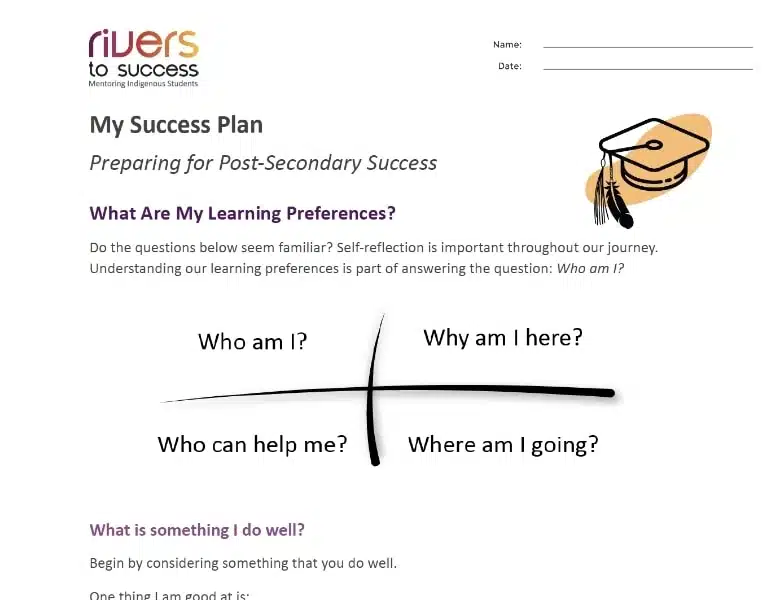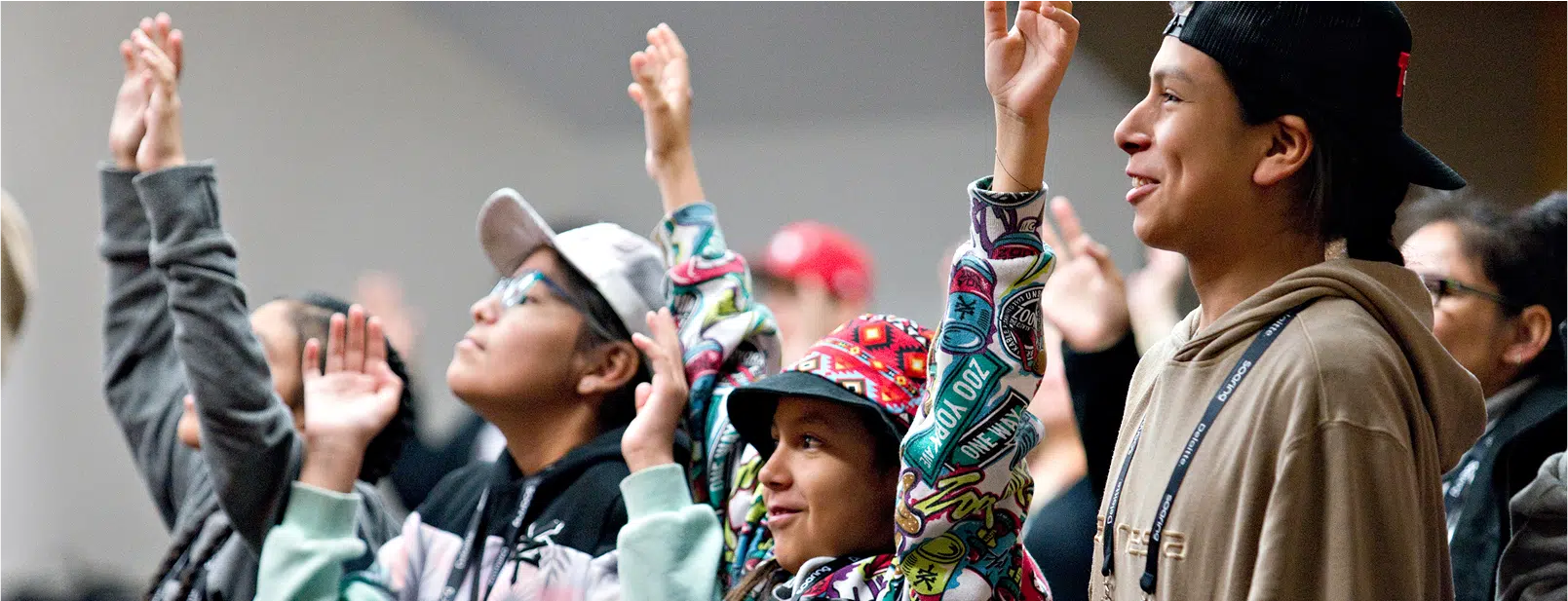
Image Text Details
Description:
My Success Plan
Preparing for Post-Secondary Success
What Are My Learning Preferences?
Do the questions below seem familiar? Self-reflection is important throughout our journey. Understanding our learning preferences is part of answering the question: Who am I?
- Who am I?
- Why am I here?
- Who can help me?
- Where am I going?
What is something I do well?
Begin by considering something that you do well.
One thing I am good at is:
How did you learn to do this thing? For example, did you read about it, did someone explain it to you, or did you watch and try it for yourself?
Using My Learning Preference(s)
You may have multiple learning preferences, and it is normal to favour some styles over others. Remember, it is important to learn in as many ways as possible. The more ways you access information (visually, aurally, reading or writing, and kinesthetically), the more likely you are to commit it to memory!
My learning preferences are:
- Visual
- Kinesthetic
- Auditory
- Reading or writing
Below are some common instructional methods your post-secondary instructors use. Think about using your learning preferences either during the activity or after while studying.
Choose only the types of instructional activities you will participate in during your studies.
Hint: The video What are my learning preferences? provided many suggestions. You may want to rewatch parts of the video if you are stuck.
Lecturing
An instructor may give a lecture using slides or simply speaking to the class.
Laboratories
Labs often accompany science and other practical classes. You should expect to carry out an experiment or simulation in a lab.
Tutorials or Discussion Classes
An instructor (or teaching assistant) may run tutorials to supplement other learning activities. Tutorials often give you a chance to practice examples, talk about the material, and ask questions in a smaller group setting with the help of an expert.
Seminar
A seminar is often an advanced course where a professor meets with a small group of students. In this setting, the teacher and students get to know each other more personally. Students focus on research and career skills and participate in presentations and discussions.
Studio
A studio class may be part of your schedule if you enroll in an arts or design program. In a studio class, you do what you are studying. If you are in an arts program, you may be drawing, sculpting, etc.
The Study Cycle
- Movement – “do it” wisdom. Reflect.
- Vision – “see it” awareness. Preview.
- Time – “relate to it” understand. Attend.
- Reason – “figure it out” knowledge. Study.
The Study Cycle expects you to budget your time as follows:
- Preview for about 5–15 minutes before class.
- Review for about 5–10 minutes after class.
- Study for 30–50 minutes twice a week, once during the week and once on the weekend.
- Reflect about once a week. The time this takes may vary.
How will you budget your time? Take some time to find out now!
How many courses am I taking this semester?
How many credits is each of my courses?
The recommended study ratio is 2:1. That means you should expect to spend 2 times longer studying than your credit hours.
It can be helpful to make a schedule to budget your study time. In the table on the next page, include the following time in your schedule:
- Each of your classes
- 5–15 minutes of preview time before each class
- 5–10 minutes of review time after each class
- Two 30–50 minutes study sessions for each class
- Time to reflect on each class at the end of the week
- One self-care activity per day
- Any family or community responsibilities you may have
Keep your schedule in a visible place, and do your best to stick to it!

